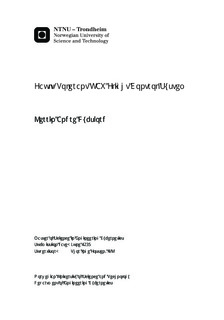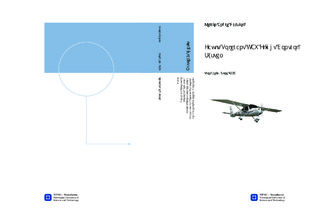| dc.contributor.advisor | Fossen, Thor Inge | nb_NO |
| dc.contributor.author | Dybsjord, Kerrin Andre | nb_NO |
| dc.date.accessioned | 2014-12-19T14:06:44Z | |
| dc.date.available | 2014-12-19T14:06:44Z | |
| dc.date.created | 2013-08-12 | nb_NO |
| dc.date.issued | 2013 | nb_NO |
| dc.identifier | 640181 | nb_NO |
| dc.identifier | ntnudaim:8845 | nb_NO |
| dc.identifier.uri | http://hdl.handle.net/11250/260841 | |
| dc.description.abstract | The main focus of this master s thesis is fault-tolerant control systems (FTCSs) for unmanned aerial vehicles (UAVs). The goals are to develop an automatic-flight control system (AFCS) with fault detection and isolation (FDI) and a reconfiguration mechanism for accommodation of faults. The literature study reviews methods for fault-tolerant control and also discusses important faults and failures related to UAVs.The FTCS is implemented in MATLAB Simulink with a nonlinear model of the Cessna 172SP as a simulation plant. Several case studies test the capabilities of the FTCS using a variety of faults in the absence of noise and disturbances. The AFCS is tested separately in fault-free conditions.The AFCS comprises of lookahead-based steering for guidance and a linearquadratic (LQ) velocity and rate controller for reference tracking. It was necessary to implement a kinematic controller to reduce stationary errors. This resulted in extended control bandwidth which increased the robustness of the AFCS. The control system gave excellent reference tracking.Parity space is chosen as the FDI method and variance testing is implemented for residual validation. The results from the FDI showed that there were large separations between simulations with and without faults. Multiple faults during a simulation were also accurately detected. In a fault situation, fault accommodation is chosen for feedback control. Because of a narrow control bandwidth of the LQ controller, optimal control was not achieved for larger faults. However, the kinematic controller increased the bandwidth substantially; accurate control was achieved within the extended bandwidth. Simulations of larger faults showed that increased errors in the LQ controller lead to rough control signals; this weakens the robustness of the FTCS. | nb_NO |
| dc.language | eng | nb_NO |
| dc.publisher | Institutt for teknisk kybernetikk | nb_NO |
| dc.title | Fault-Tolerant UAV Flight Control System | nb_NO |
| dc.type | Master thesis | nb_NO |
| dc.source.pagenumber | 155 | nb_NO |
| dc.contributor.department | Norges teknisk-naturvitenskapelige universitet, Fakultet for informasjonsteknologi, matematikk og elektroteknikk, Institutt for teknisk kybernetikk | nb_NO |

